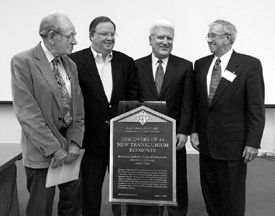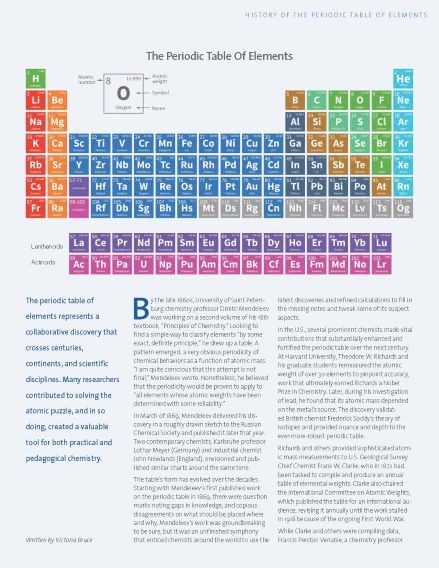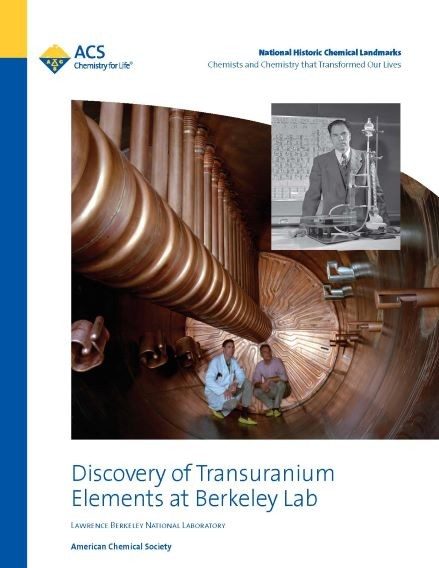Discovery of Transuranium Elements at Berkeley Lab
A National Historic Chemical Landmark
Initially dedicated at the Lawrence Berkeley National Laboratory in Berkeley, California, on March 11, 2000. Rededicated at Lawrence Hall of Science in Berkeley on August 11, 2019, during the International Year of the Periodic Table.
The quest to understand what comprises the world around us dates back to ancient times. As early as the fourth century BCE, the Greek philosopher Aristotle proposed that the physical universe consisted of varying combinations of four “elements”—earth, water, air, and fire. Over the next few hundred years, practitioners isolated and used elements that meet our modern definition—they were fundamental substances consisting of one type of atom that singly or in combination constitute all matter.
Some of these elements, like gold, silver, and tin, were found in nature in relatively pure form; others, such as lead, mercury, and sulfur, had to be isolated from their ores. The 18th-century development of experimental science allowed rapid discovery of more new elements. But uranium, identified in 1789, remained the heaviest known chemical element for more than 150 years.
In the mid-1930s, a new breed of nuclear scientists, made up of chemists and physicists, became intrigued with the possibility of synthesizing new elements not found in nature. Their dream was finally realized in 1937 when Italian mineralogist Carlo Perrier and physicist Emilio Segrè discovered technetium. Since then, several other elements were created or discovered for the first time at Lawrence Berkeley National Laboratory (Berkeley Lab) in Berkeley, California. This body of work has contributed to a better understanding of the structure of the atom’s nucleus and the nature of matter.
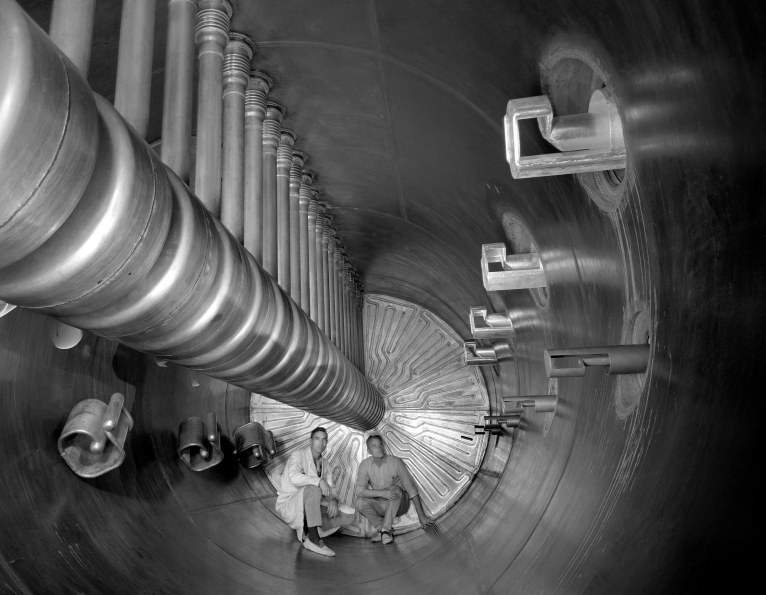
New elements at Berkeley
Forming new elements involves changing the nuclei of known atoms by fusing them with other nuclei or with neutrons. Since nuclei contain positively charged protons as well as charge-free neutrons, fusing one nucleus with another requires overcoming the tremendous repulsion between the two positively charged nuclei. The forces required are millions of times greater than those involved in, say, the explosion of TNT.
Devices called particle accelerators have been used to provide energetic beams of various charged particles to produce the desired nuclear reactions with suitable targets. Accelerators can be linear, in which the beam of particles is accelerated in a straight line, or circular, as in the cyclotron invented by the American physicist Ernest O. Lawrence (1901–1958). Both accelerator types have been used in the discovery of elements at Berkeley Lab.
Synthesis of new elements at the lab began with the creation of neptunium (atomic number 93), the first element beyond uranium in the periodic table, by Edwin McMillan (1901–1991) and Philip Abelson (1913–2004) in 1940. Their work involved irradiating a uranium target with neutrons and was conducted at the Radiation Laboratory at the University of California, Berkeley (predecessor to Berkeley Lab).
Later, protons or deuterons (nuclei of hydrogen or deuterium atoms), alpha particles (nuclei of helium atoms), and heavier particles were used as projectiles. One outcome of this effort was plutonium (94), which was created in 1940 by bombarding uranium with deuterons—work conducted by a team led by Glenn Seaborg (1912–1999).
Glenn Seaborg and the heavy elements
Seaborg was a promising nuclear chemist whose creativity in studying radioactive isotopes caught the attention of leaders of the Manhattan Project, an effort for nuclear weapons development during World War II. Seaborg moved temporarily to work with the Metallurgical Laboratory at the University of Chicago for this work in the early 1940s. While at Chicago, he continued his work to discover new elements with collaborators from Berkeley Lab, resulting in the discovery of americium (95) and curium (96) in 1944. Seaborg’s “actinide hypothesis,” one of his major contributions to chemistry, proposed the organization of the actinide series (atomic numbers 89-103) under the lanthanides (atomic numbers 57-71) and resulted in the configuration that the periodic table shows today.
When Seaborg and his research group returned to Berkeley Lab after the war, they soon developed new methods to form and detect radioactive elements and used them in the discoveries of berkelium (97) in late 1949 and californium (98) in early 1950. Isolation and identification of these elements required chemical separations, a particularly difficult problem because their chemistry was completely unknown.
In November 1952, the first thermonuclear device, known as the hydrogen bomb or H-bomb, was detonated in the South Pacific by Los Alamos Scientific Laboratory. Much to everyone’s surprise, analyses of the debris conducted by Berkeley Lab showed that two new elements, later named einsteinium (99) and fermium (100), had been produced. The huge, 10-megaton blast had created an enormous and nearly instantaneous neutron flux that resulted in the capture of at least 17 neutrons by uranium-238.
Within a couple of years, einsteinium and fermium were also produced in high-flux neutron reactors, but it soon became disappointingly clear that the neutron-capture path could not create elements beyond atomic number 100. Attention turned to using light-ion bombardments to add the necessary numbers of protons. Even with new technologies coming to the rescue, it took a few years to design and build linear accelerators and cyclotrons to accelerate the heavier projectiles.
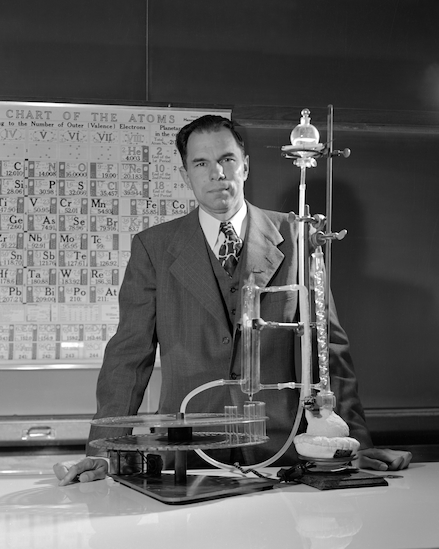
Heavier elements, one atom at a time
In 1955, mendelevium (101) was formed by bombardment of einsteinium-253 with a beam of helium-4 ions (alpha particles). The successful identification of mendelevium was performed using separation by a recoil method proposed by Berkeley Lab’s Albert Ghiorso (1915–2010). This method took advantage of the feeble recoil imparted in the fusion reaction of helium with the highly radioactive einsteinium target. Recoil kicked the mendelevium atoms out of the thin target onto a gold foil catcher. Chemical processing then proved that a new element had indeed been produced. Seventeen atoms in all were detected. This new separation technique was a powerful tool that would be used for subsequent new element experiments. Mendelevium was the first element identified on an “atom-at-a-time” basis and the heaviest element to be first identified by chemical separation.
With the completion of the heavy ion linear accelerator (HILAC) at Berkeley Lab in 1957, a double-recoil method was put to work to identify nobelium (102). Nobelium atoms, recoiling from a curium target bombarded by carbon-12 ions, were stopped in helium gas and deposited onto a moving conveyor belt that carried them underneath a negatively charged collector. When the nobelium atoms alpha-decayed on the belt, the resulting fermium “daughter” atoms were kicked off the surface by the recoil from the alpha particles. These atoms were picked up by the collector and shown to behave chemically like fermium. This was the first use of the mother-daughter relationship to prove the atomic number of a new element. Although it was successful, the double-recoil method only worked if the isotopes’ half-lives were suitably long. Faster methods were needed to measure the activities of less stable isotopes.
The first important improvement came with the invention of solid-state detectors to measure the energies of the various alpha emitters. In the case of lawrencium (103), first produced and identified at the HILAC in 1961, the recoiling atoms were deposited into a metallized Mylar tape, which was then moved past a series of solid-state detectors for measurement of the short-lived alpha activity of the lawrencium-258 nuclei. Another equally important development was a gas jet system that transported the activities outside the target chamber where they could be viewed by the new detectors. Many variants of these quick and efficient methods were developed over time. With these new tools it became possible to produce and identify still heavier and shorter-lived elements.
The Berkeley Lab group gradually developed a new apparatus called the vertical wheel. It was used at the HILAC in 1969 to perform the first positive identification of rutherfordium (104) by measuring the decay of its isotopes 257 and 259. Dubnium (105) was first positively identified in 1970 using the vertical wheel to measure decay of dubnium daughters.
The vertical wheel reached its ultimate capability in 1974 in the element 106 discovery experiment by a Berkeley-Livermore group. In the experiment, the relationships—mother, daughter, and granddaughter—of isotope 263 of the new element 106 and its known descendants, isotope 259 of element 104 and isotope 255 of element 102, were demonstrated. The proposal of the name seaborgium for this element produced a dramatic worldwide discussion prior to its ultimate acceptance.
Towards the "Island of Nuclear Stability"
In 1964-65, scientists at Berkeley Lab reported calculations predicting an "island of nuclear stability" on the unknown far reaches of the periodic table, where nuclei with half-lives as long as a billion years could exist. This prediction has guided subsequent work in the field of nuclear science and the search for new elements and isotopes of known elements.
The remarkably productive period from the 1940s through 1974 at Lawrence Berkeley National Laboratory that led to the creation and discovery of many new elements transformed the field of nuclear science. This area of research continues, with scientists around the world continuing to create and discover ever-larger elements, hoping to someday land at the "island of nuclear stability."
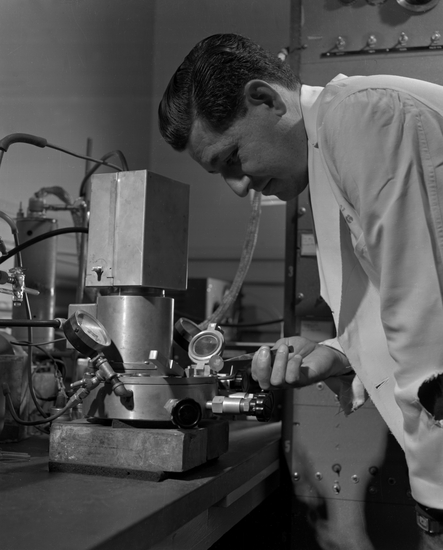
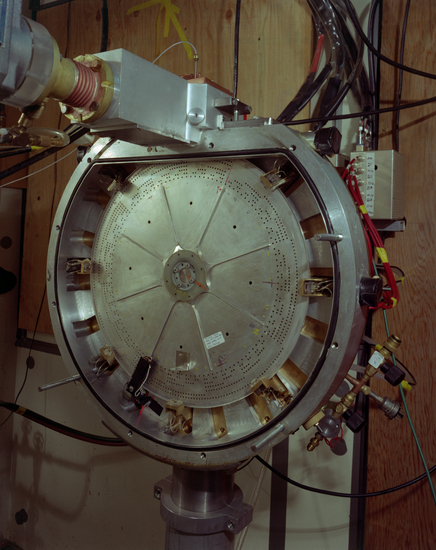
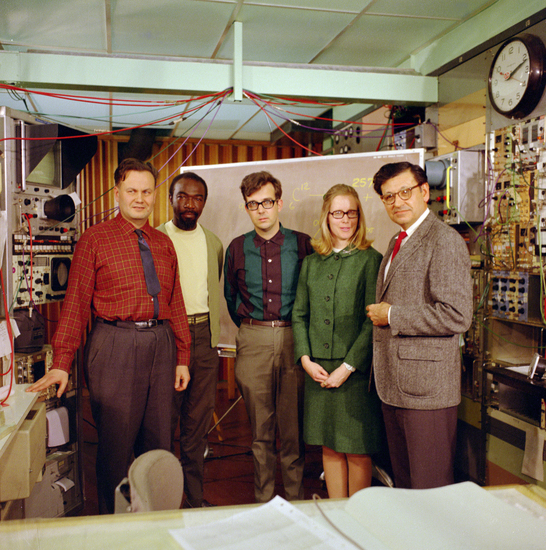
| Atomic Number | Name (Symbol) | Year of Discovery | Berkeley Lab Discoverers |
|---|---|---|---|
| 93 | Neptunium (Np) | 1940 | E. McMillan P. Abelson |
| 94 | Plutonium (Pu) | 1940 | G. Seaborg A. Wahl J. Kennedy E. McMillan |
| 95 | Americium (Am)* | 1944 | G. Seaborg R. James L. Morgan A. Ghiorso |
| 96 | Curium (Cm)* | 1944 | G. Seaborg R. James A. Ghiorso |
| 97 | Berkelium (Bk) | 1949 | S. Thompson A. Ghiorso G. Seaborg |
| 98 | Californium (Cf) | 1950 | S. Thompson K. Street, Jr. A. Ghiorso G. Seaborg |
| 99 | Einsteinium (Es) | 1952 | A. Ghiorso G. Choppin S. Thompson B. Harvey |
| 100 | Fermium (Fm) | 1952 | A. Ghiorso S. Thompson G. Higgins G. Seaborg M. Studier P. Fields S. Fried H. Diamond J. Mech G. Pyle J. Huizenga A. Hirsch W. Manning C. Browne H. Smith R. Spence |
| 101 | Mendelevium (Md) | 1955 | A. Ghiorso B. Harvey G. Choppin S. Thompson G. Seaborg |
| 102 | Nobelium (No)** | 1958 | A. Ghiorso T. Sikkeland J. Walton G. Seaborg |
| 103 | Lawrencium (Lr)** | 1961 | A. Ghiorso T. Sikkeland A. Larsh R. Latimer |
| 104 | Rutherfordium (Rf)** | 1969 | A. Ghiorso M. Nurmia J. Harris K. Eskola P. Eskola |
| 105 | Dubnium (Db)** | 1970 | A. Ghiorso M. Nurmia K. Eskola J. Harris P. Eskola |
| 106 | Seaborgium (Sg) | 1974 | A. Ghiorso J. Nitschke J. Alonso C. Alonso M. Nurmia G. Seaborg E. Hulet R. Lougheed |
* Elements 95 and 96 were discovered by Berkeley Lab scientists during their temporary assignment at the University of Chicago.
** Elements 102-105 were discovered independently at LBNL and the Joint Institute of Nuclear Research in Dubna, Russia.
Landmark dedication and acknowledgments
Landmark dedication
The American Chemical Society dedicated The Discovery of Transuranium Elements as a National Historic Chemical Landmark in a ceremony at the Ernest Orlando Lawrence Berkeley National Laboratory (now Lawrence Berkeley National Laboratory, or Berkeley Lab) in Berkeley, California, on March 11, 2000. The achievement was honored again at a rededication ceremony at Lawrence Hall of Science in Berkeley on August 11, 2019, during the International Year of the Periodic Table. The updated commemorative plaque reads:
Between 1940 and 1974, teams of scientists working at the site now known as Lawrence Berkeley National Laboratory discovered more than a dozen new elements beyond element 92 (uranium). These researchers developed theories and techniques to expand the periodic table by creating and identifying heavy elements with ever higher atomic numbers, including plutonium, berkelium, californium, and lawrencium. This series of achievements culminated in 1974 with the creation of element 106, which was named seaborgium to honor Nobel Laureate Glenn Seaborg (1912-99), who played a key role in many of these discoveries at the laboratory.
Acknowledgments
Adapted for the internet from "Discovery of Transuranium Elements at Berkeley Lab," produced by the American Chemical Society's National Historic Chemical Landmarks program in 2019.
ACS External Affairs & Communications produced this page and wishes to thank contributors and reviewers, especially those at Lawrence Berkeley National Laboratory; the University of California, Berkeley; Lawrence Hall of Science; the ACS California Section; and the ACS NHCL Subcommittee.
Additional resources
Lesson plan
Further reading
- Berkeley Lab History, 75 Years of World Class Science (Lawrence Berkeley National Laboratory)
- Glenn Theodore Seaborg biography (Chemical Heritage Foundation)
- D. C. Hoffman and D. M. Lee (March 1999). Chemistry of the Heaviest Elements—One Atom at a Time. Journal of Chemical Education
- D. C. Hoffman (10 Oct. 2009). Key to Past "Elemental" Discoveries—A New Role in the Future? Journal of Chemical Education
- Element discoveries at Lawrence Berkeley National Lab honored at Landmark event (ACS)
Cite this page
American Chemical Society National Historic Chemical Landmarks. Discovery of Transuranium Elements at Berkeley Lab. http://www.acs.org/content/acs/en/education/whatischemistry/landmarks/transuranium-elements-at-berkeley-lab.html (accessed Month Day, Year).
